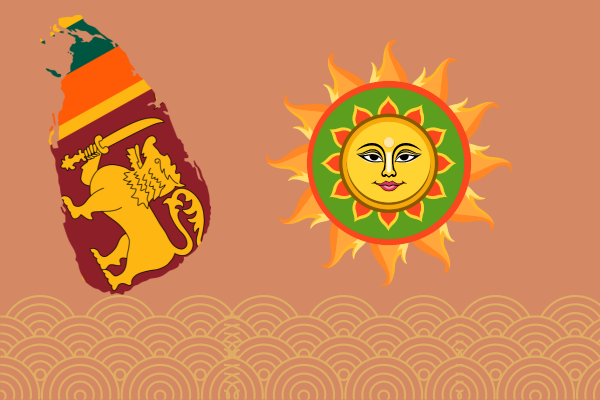Sinhala and Tamil New Year in Sri Lanka: A Celebration of Heritage and Harmony
Source : Qld Sri Lankan Newsletter – Dæhæna – April 2025
Image Source : facebook
Sinhala and Tamil New Year, known as Aluth Avurudu in Sinhala and Puthandu in Tamil, is one of the most significant cultural festivals in Sri Lanka. Celebrated in mid-April, this festival marks the traditional New Year for both the Sinhalese and Tamil communities. The Traditional New Year follows the astrological movement of the sun from the zodiac sign of Pisces to Aries, symbolising the end of the old year and the beginning of a prosperous new cycle. This festival is deeply rooted in history, culture, and social unity, making it a vibrant and meaningful occasion for Sri Lankans.
Historical Significance
Historically, Sri Lanka has been an agrarian society, and the New Year coincides with the harvest season. Ancient Sinhalese Kings and Tamil Chieftains recognised the importance of the festival, incorporating it
into royal customs and traditions. The astrological basis of the festival reflects the deep connection between Sri Lankan culture and HinduBuddhist cosmology, which greatly influenced the country’s historical narratives.
Cultural Aspects
The Sinhala and Tamil New Year is rich in cultural traditions that have been preserved for generations. The festival officially begins with a nontransitional period known as Nonagathe, during which people refrain from work and engage in religious activities. Auspicious times (nekath) determine the exact moments for lighting the hearth, cooking the first meal, and exchanging greetings. Traditional foods such as kiribath (milk rice), kokis, konda kavum, and mung kavum are prepared and shared among family and neighbours. Games and activities play an integral role in the celebrations. Traditional sports like kamba adeema (tug-of-war), kotta pora (pillow fighting), and kana mutti bindeema (breaking the clay pot blindfolded) are enjoyed by both children and adults. Additionally, wearing new clothes in auspicious colours and offering blessings to elders are customary practices that reinforce familial and communal bonds.
Social Harmony and Unity
Sinhala and Tamil New Year is a festival that unites communities across religious and linguistic boundaries. The celebrations transcend differences, fostering harmony and mutual respect. The exchange of gifts, visiting relatives, and engaging in communal festivities promote peace and harmony.
Sinhala and Tamil New Year is not just a festival but a reflection of Sri Lanka’s rich heritage and social fabric.
























